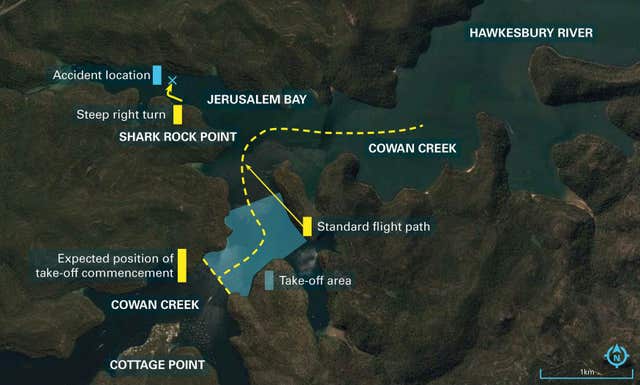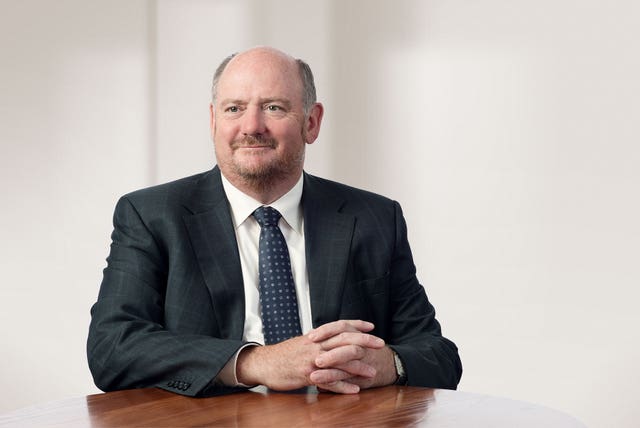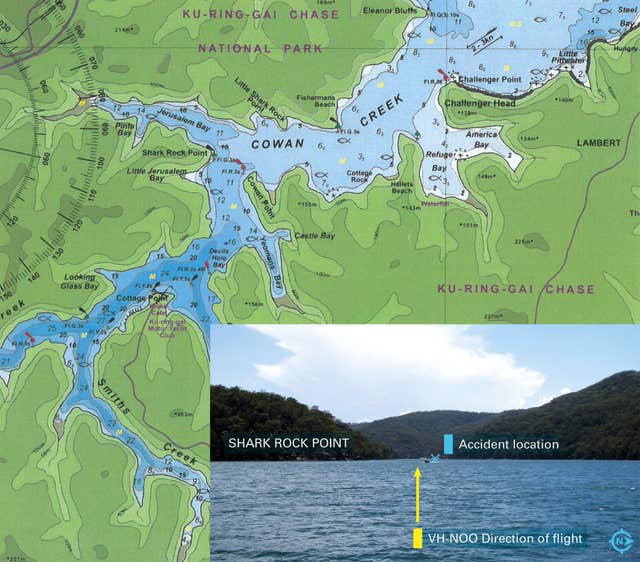
A seaplane that crashed near Sydney on New Year’s Eve, killing five British people, hit an area of water away from the expected and standard flight path, a preliminary report has said.
The de Havilland Canada DHC-2 Beaver collided with water in Jerusalem Bay, 25 miles north of Sydney city centre, in a “near-vertical position”, according to witnesses.
Richard Cousins, the 58-year-old chief executive of FTSE 100 company Compass Group, died alongside his sons, Will and Edward, aged 25 and 23, his fiancee, Emma Bowden, 48, and her 11-year-old daughter Heather.
The experienced pilot, Canadian Gareth Morgan, 44, was also killed.
The ATSB has released its preliminary investigation report into a collision with water involving de Havilland Canada DHC-2 Beaver aircraft VH-NOO, at Jerusalem Bay, Hawkesbury River, NSW on 31 December 2017. The investigation is continuing. https://t.co/GlijQ78GHb pic.twitter.com/FP9ampEU7C
— ATSB (@atsbinfo) January 30, 2018
A preliminary report by the Australian Transport Safety Bureau (ATSB) said the aircraft operated by Sydney Seaplanes left Cottage Point bound for Rose Bay at 3.01pm on January 31.
The report said: “The operator reported that the aircraft’s expected and standard flight path after departing Cottage Point was to climb initially to the north then turn right along Cowan Creek toward the main body of the Hawkesbury River, until sufficient altitude was gained to fly above terrain and return to Rose Bay.
“While the exact take-off path from Cottage Point has yet to be established, the aircraft was observed by witnesses to enter Jerusalem Bay.
“The aircraft was observed to enter the bay at an altitude below the height of the surrounding terrain.
“Several witnesses also reported hearing the aircraft’s engine and stated that the sound was constant and appeared normal.
“Shortly after entering Jerusalem Bay, numerous witnesses reported seeing the aircraft suddenly enter a steep right turn and the aircraft’s nose suddenly drop before the aircraft collided with the water in a near vertical position.”

Aaron Shaw, chief executive of Sydney Seaplanes, said the plane “simply should not have been where it was”.
He said: “The key question arising from the report is why the plane crashed approximately half way down Jerusalem Bay, which is surrounded by steep terrain and has no exit.
“It is not a route we authorise in our landing and take-off area register and the plane simply should not have been where it was.
“Further, the aircraft is then reported to have entered in to an 80 to 90-degree bank angle turn. A turn of this nature at low altitude by a pilot with Gareth’s skills, experience and intimate knowledge of the location is totally inexplicable.
“We hope the ATSB’s request for further eye witness accounts will shed additional light on these matters.”
The wreckage of the seaplane was pulled from approximately 15 metres of water on January 4, in an operation by police divers and the ATSB.
There was no evidence of the aircraft hitting a bird or an object prior to take-off or in flight, or of the plane breaking up in flight.
An initial examination of the parts indicated “flight control continuity throughout, indicating no evidence of flight control issues,” the report said.

Pilot Mr Morgan had a total of more than 10,000 hours of flying experience, about 9,000 hours of which were on floatplanes.
He had been employed by Sydney Seaplanes from 2011 to 2014 before relocating overseas, returning to Australia in May 2017 when he undertook a number of checks.
His commercial pilot licence was last reissued by the Civil Aviation Safety Authority (CASA) on March 21 2017, after he had undertaken a flight review and proficiency check, the ATSB said.
He also held an Aviation Medical Certificate valid until March 6 2018 and was reported to have a “high standard of health”.
A final report into the incident is expected to be released in about 11 months, and will consider factors including the flight and engine control positions, the aircraft maintenance history, pilot qualifications, experience and medical information and witness testimony.
The sequence of events leading up to the crash, any environmental factors and stall warning systems will also be considered, as well as similar incidents in Australia and other countries.


Comments: Our rules
We want our comments to be a lively and valuable part of our community - a place where readers can debate and engage with the most important local issues. The ability to comment on our stories is a privilege, not a right, however, and that privilege may be withdrawn if it is abused or misused.
Please report any comments that break our rules.
Read the rules here